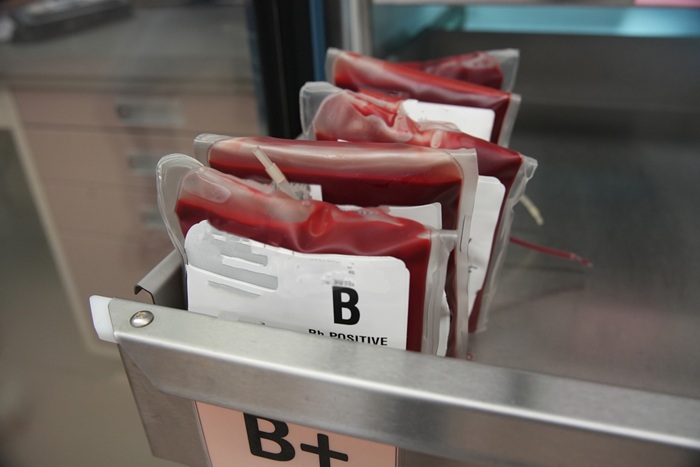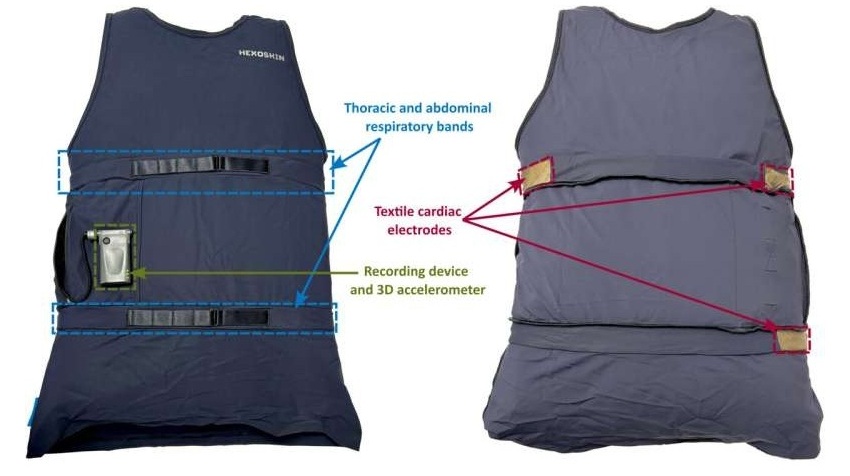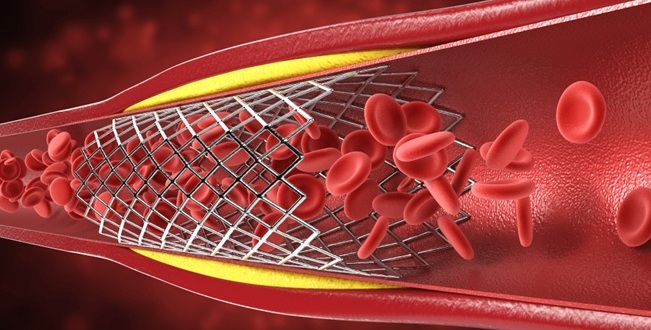Colorectal Surgery Device Prevents Need for Ostomy
|
By HospiMedica International staff writers Posted on 05 Feb 2018 |

Image: The Colovac endoluminal bypass sheath protects against anastomotic leakage (Photo courtesy of SafeHeal).
A new endoluminal bypass sheath could help surgeons avoid the need for a diverting ostomy in patients undergoing colectomy.
The SafeHeal (Paris, France) Colovac device is a seamless, minimally invasive, and fully reversible flexible bypass sheath that is intended to reduce any contact of fecal content with the colorectal anastomotic site, following open or laparoscopic colorectal surgery. It is anchored above the anastomosis using a stent combined with a vacuum-based mechanism; once in place, the implant covers the colon down to the anus, remaining in place until healing and tissue repair processes are complete, after which it is removed in an endoscopic procedure.
Colovac thus enables patients to resume their normal life without having to bear an artificial anus and wear ostomy pouches for several months. For the device’s European CE mark study, 15 colorectal surgery patients initially scheduled to receive a diverting ostomy will receive a Colovac device in lieu of the ostomy. The two first procedures were recently carried out at the Institute of Image-Guided Surgery (Strasbourg, France), in collaboration with CHU de Strasbourg (France).
“There is a high clinical and economic need for a disruptive product such as Colovac, which effectively reduces anastomotic leakage rates following colorectal surgery, while avoiding the distressing impacts of an ostomy for patients,” said Karl Blohm, CEO of SafeHeal. “This trial is a significant milestone in moving SafeHeal towards regulatory approval in Europe and the US.”
“In the two cases we performed, the Colovac procedure was very simple, safe and well received by the patients. We look forward to further participating in the clinical evaluation of this technology,” said digestive surgeon Antonio D’Urso, MD, principal investigator of the study. “Based on this early experience, the trial confirms the good usability of the device, its placement and retrieval, in line with preclinical experiments.”
Anastomotic leakage occurs in up to 20% of patients undergoing anterior resection. It is considered to be the most serious colorectal surgical complication, frequently resulting in the rapid development of severe peritonitis, septic shock, and multiple organ dysfunction. Ostomy, the current standard of care to reduce the risk of anastomotic leakage, is a traumatic and aggressive process that significantly reduces the quality of life of patients and entails its own complications.
Latest Surgical Techniques News
- Ablation Reduces Stroke Risk Associated with Atrial Fibrillation
- Optical Tracking Method Identifies Target Areas in Robot-Assisted Neurosurgery
- General Anesthesia Improves Post-Surgery Outcomes for Acute Stroke Patients
- Drug-Coated Balloons Can Replace Stents Even in Larger Coronary Arteries
- Magnetic Kidney Stone Retrieval Device Outperforms Ureteroscopic Laser Lithotripsy
- Absorbable Skull Device Could Replace Traditional Metal Implants Used After Brain Surgery
- Magic Silicone Liquid Powered Robots Perform MIS in Narrow Cavities
- 'Lab-on-a-Scalpel' Provides Real-Time Surgical Insights for POC Diagnostics in OR
- Biodegradable Brain Implant Prevents Glioblastoma Recurrence
- Tiny 3D Printer Reconstructs Tissues During Vocal Cord Surgery
- Minimally Invasive Procedure for Aortic Valve Disease Has Similar Outcomes as Surgery
- Safer Hip Implant Design Prevents Early Femoral Fractures
- New Nanomaterial Improves Laser Lithotripsy for Removing Kidney Stones
- Ultraflexible Neurovascular Microcatheter Delivers Therapies to Tiniest Blood Vessels

- Magnetic Soft Robotic Valve Provides Minimally Invasive Intervention for Acid Reflux
- Wireless Metamaterial Spinal Implants Can Feel, Heal and Communicate
Channels
Critical Care
view channel
Earlier Blood Transfusion Could Reduce Heart Failure and Arrhythmia in Heart Disease Patients
Blood loss during or after surgery can place significant stress on people with heart disease, increasing the risk of dangerous complications. Transfusions are often delayed until hemoglobin levels fall... Read more
'Smart' Shirt Detects Epileptic Seizures in Real Time
Epilepsy affects roughly one in every 100 people worldwide, causing seizures that can range from subtle episodes to severe convulsions and loss of consciousness. These events arise from excessive electrical... Read morePatient Care
view channel
Revolutionary Automatic IV-Line Flushing Device to Enhance Infusion Care
More than 80% of in-hospital patients receive intravenous (IV) therapy. Every dose of IV medicine delivered in a small volume (<250 mL) infusion bag should be followed by subsequent flushing to ensure... Read more
VR Training Tool Combats Contamination of Portable Medical Equipment
Healthcare-associated infections (HAIs) impact one in every 31 patients, cause nearly 100,000 deaths each year, and cost USD 28.4 billion in direct medical expenses. Notably, up to 75% of these infections... Read more
Portable Biosensor Platform to Reduce Hospital-Acquired Infections
Approximately 4 million patients in the European Union acquire healthcare-associated infections (HAIs) or nosocomial infections each year, with around 37,000 deaths directly resulting from these infections,... Read moreFirst-Of-Its-Kind Portable Germicidal Light Technology Disinfects High-Touch Clinical Surfaces in Seconds
Reducing healthcare-acquired infections (HAIs) remains a pressing issue within global healthcare systems. In the United States alone, 1.7 million patients contract HAIs annually, leading to approximately... Read moreHealth IT
view channel
Printable Molecule-Selective Nanoparticles Enable Mass Production of Wearable Biosensors
The future of medicine is likely to focus on the personalization of healthcare—understanding exactly what an individual requires and delivering the appropriate combination of nutrients, metabolites, and... Read moreBusiness
view channel
Philips and Masimo Partner to Advance Patient Monitoring Measurement Technologies
Royal Philips (Amsterdam, Netherlands) and Masimo (Irvine, California, USA) have renewed their multi-year strategic collaboration, combining Philips’ expertise in patient monitoring with Masimo’s noninvasive... Read more
B. Braun Acquires Digital Microsurgery Company True Digital Surgery
The high-end microsurgery market in neurosurgery, spine, and ENT is undergoing a significant transformation. Traditional analog microscopes are giving way to digital exoscopes, which provide improved visualization,... Read more
CMEF 2025 to Promote Holistic and High-Quality Development of Medical and Health Industry
The 92nd China International Medical Equipment Fair (CMEF 2025) Autumn Exhibition is scheduled to be held from September 26 to 29 at the China Import and Export Fair Complex (Canton Fair Complex) in Guangzhou.... Read more














